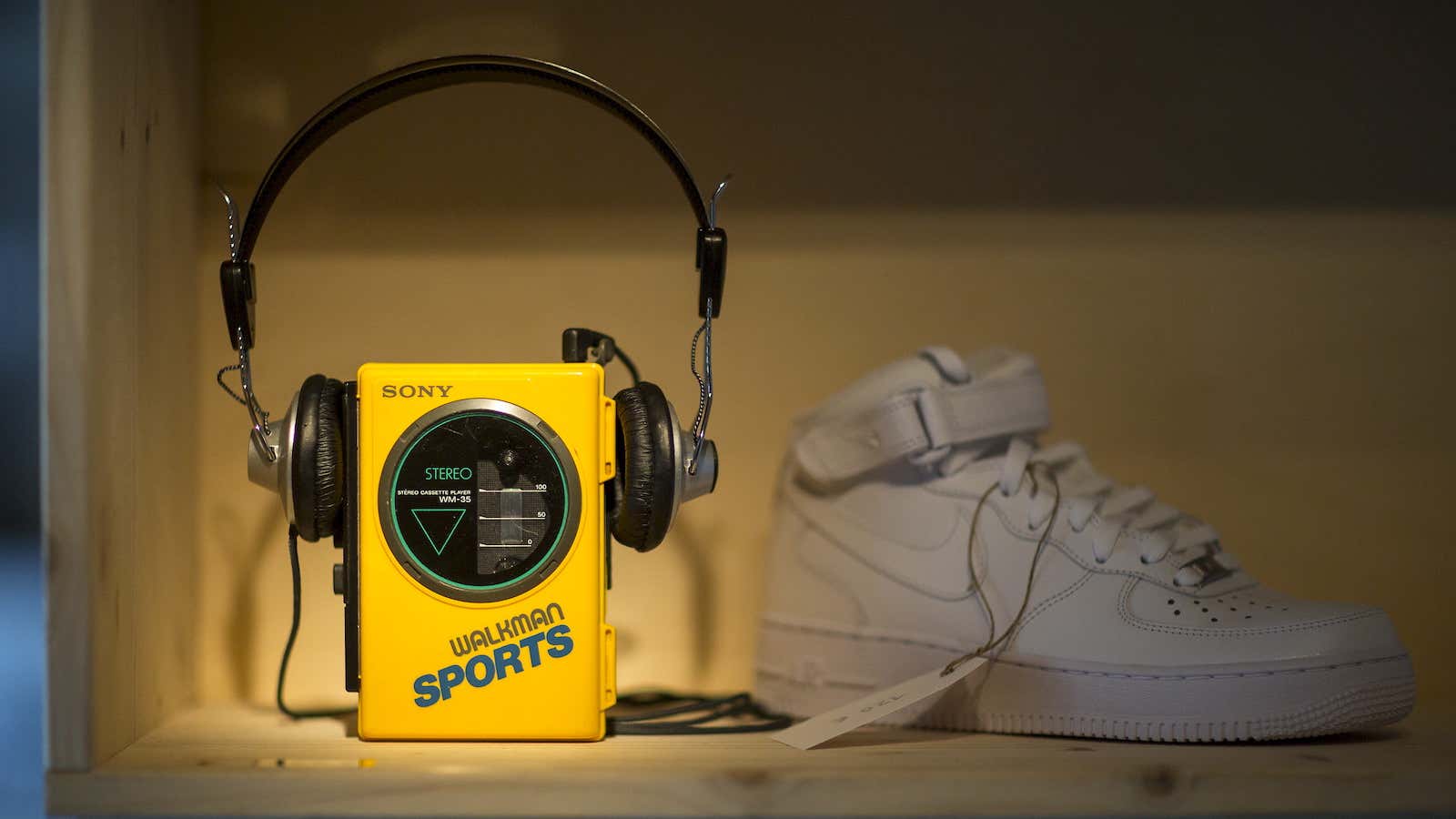Forty-three years ago, on July 1, 1979, the Sony Walkman went on sale for the very first time. The personal cassette player was greeted as a revolution—now people could listen to the music of their choice, privately and on-the-go.
While the Walkman still has its fans among analog aficionados, it’s far less popular among music-lovers than other older technologies like record players—largely because the audio quality of cassette tapes was never that good. But the Walkman had a lasting impact, precipitating the rise of MP3 players, and accompanying headphones that allow us to revel in our own auditory worlds anytime, anywhere—for better and for worse.
Why the Sony Walkman was so controversial
Walkman cassette players were controversial right from the start. A 2021 episode of Radiolab recounts the splash Sony made when it first debuted the devices to journalists in Tokyo’s Yoyogi Park, instructing members of the press to put on a pair of headphones, press play, and look out at passersby. A voice over the headphones instructed the journalists to look around, and as they did, they saw that they were surrounded by people with their own Walkmans, each their own personal bubbles. “Almost immediately, folks were hollering that this personalized silo, intimate consumption of media was going to end communities, if not society as we knew it,” Radiolab’s Simon Adler explains.
The fear was understandable. Listening to music outside the home, after all, had consisted largely of concerts and other group events. Even listening to a broadcast on a portable radio meant that you were simultaneously experiencing a symphony or the latest Beatles single with countless others. And blasting Top 40 radio via a boombox while walking down the street might annoy fellow commuters, but at least everyone was experiencing that annoyance together.
With the Walkman, music became a way that you could seal yourself off from everyone else rather than bringing people together. “With the advent of the Sony Walkman came the end of meeting people,” Susan Blond, a vice president at CBS Records, told the Washington Post back in 1981. “It’s like a drug: You put the Walkman on and you blot out the rest of the world.”
Others, however, were quick to note the advantages of said blotting. “It’s nice to hear Pavarotti instead of car horns,” Andy Warhol told the Post.
The legacy of the Sony Walkman
Sony stopped manufacturing Walkman cassette players in 2010, having sold more than 200 million worldwide. But society is very much still debating the tradeoffs of technology that isolates us while bringing more joy, peace, and convenience to our everyday lives.
Noise-canceling headphones, for example, have further allowed people to cut themselves off themselves from their environments. That’s not necessarily a bad thing: It’s hard to argue against their utility when you’re trying to concentrate in a busy open office or working from home amidst a barking dog and rambunctious kids. And many people today rely on a pair of oversized headphones and a Spotify playlist streaming on their iPhone to help ward off sexual harassment and unwanted advances from strangers.
But as the New York Times notes, carrying a whole library of music in our pockets means that we’ve also muffled “the aural serendipity of our existence—the chance conversations, the songbird trills.” The difficulty of opting into a private universe of sound is that once we slip on a pair of headphones and press play, we don’t know what we’re missing.
